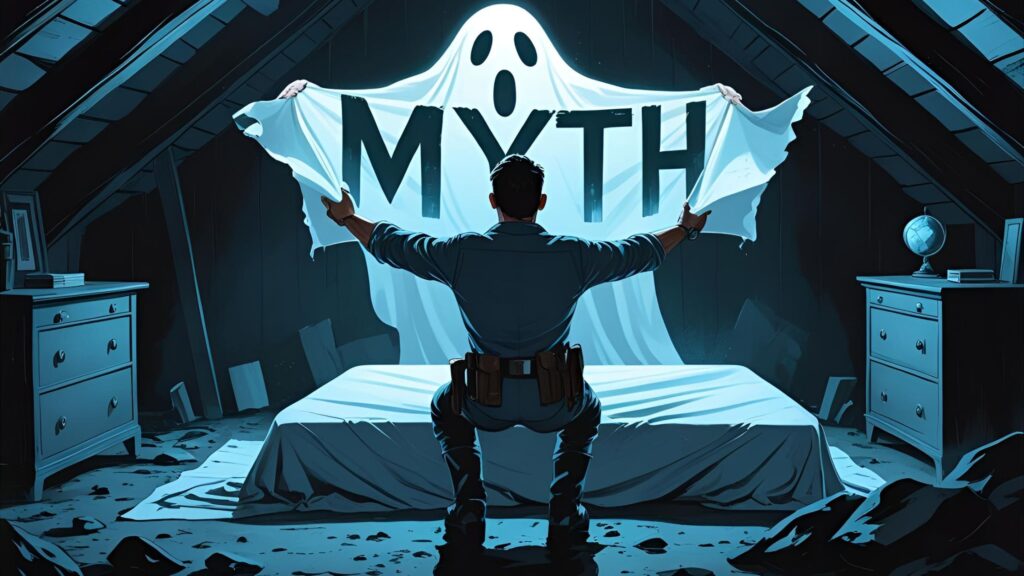AI has become the default headline material for everything—from the end of jobs to the rise of sentient machines to the next big creativity boom. But as the noise grows louder, the misconceptions do too.
Let’s set the record straight. Here are five of the most persistent AI myths—and what’s actually true.
Myth 1: AI is 100% Objective
Truth: AI reflects human bias—just faster and at scale.
It’s tempting to think machines are neutral. That an algorithm, by nature, is fair. But AI systems are trained on data—data generated by humans, shaped by policies, collected under imperfect conditions.
If your training data contains bias, your model will learn it. If your labels reflect outdated norms or subjective judgment calls, the algorithm will replicate those decisions automatically. The result? Systems that look objective but quietly reinforce existing inequalities—in hiring, lending, healthcare, and more.
AI isn’t born biased. But it inherits it. And unless you deliberately test for that, design against it, and monitor in production, it stays hidden behind the curtain of math.
Myth 2: Machines Can’t Be Creative
Truth: Machines can create—just not like humans do.
When people say “AI can’t be creative,” they often mean it can’t be original. But AI can absolutely generate music, write stories, design logos, and riff on prompts in ways that feel fresh.
What it’s doing is remixing. It draws on vast amounts of existing data and patterns to synthesize something new—sort of like a jazz musician who’s heard every solo ever played.
What it lacks is intent. AI doesn’t daydream. It doesn’t long for expression. It doesn’t want to create. But it can produce results that look creative because creativity isn’t a binary switch—it’s a spectrum.
Is it art? That’s a different debate. But is it creative? Yes—just not in the human sense of the word.
Myth 3: AI = Robots
Truth: AI mostly lives in backend systems, not shiny androids.
Blame science fiction for this one. But AI doesn’t need a face or a voice or a bipedal frame. In fact, most real-world AI is completely invisible.
It’s routing your parcels. Filtering your inbox. Personalizing your shopping. Scoring your credit application. Detecting fraud. Managing energy grids. Translating languages in milliseconds.
It runs on servers, lives in code, and scales across infrastructure. The “robot apocalypse” is far less interesting—and far less likely—than the quiet automation that’s already reshaping the world.
If you’re picturing a humanoid assistant, you’re watching the wrong part of the story.
Myth 4: AI Works Like a Brain
Truth: Neural networks are inspired by biology, but they don’t think like us.
Yes, we borrowed the term “neural network” from neuroscience. And sure, both brains and models involve connections and signals. But that’s about where the similarity ends.
Brains operate with electrochemical complexity we don’t fully understand. They’re dynamic, context-rich, and plastic. Neural networks, on the other hand, are math functions layered and tuned through optimization—great at spotting patterns in structured data, but not conscious, emotional, or truly aware.
AI doesn’t „understand“ in the way humans do. It doesn’t grasp meaning, nuance, or implication—it learns statistical associations. It’s not a mind. It’s a mirror with algorithms behind it.
Myth 5: AI Will Replace Everyone
Truth: AI will automate some tasks—but amplify many more.
Yes, AI will change jobs. It already is. Repetitive tasks, data processing, document review—all are fair game. But most roles aren’t monoliths. They’re a collection of tasks, only some of which can be automated.
The future isn’t binary. It’s augmented. AI becomes a tool—like a search engine, a spreadsheet, or a coding assistant. It levels up people who know how to use it. It exposes the gap for those who don’t.
Empathy, problem framing, judgment, and domain expertise—those still belong to humans. And ironically, as machines get better at the predictable stuff, the value of human skills rises in everything else.
Final Thought: Less Hype, More Literacy
AI is powerful. But it’s not magic. It’s not a villain. And it’s not a panacea.
To work with it effectively—whether as a builder, a business leader, or just a citizen—you need more than headlines. You need understanding.
Because the future won’t be shaped by those who fear AI or blindly chase it. It’ll be shaped by those who get what it really is—and what it isn’t.
Let’s kill the myths. And build better systems.

